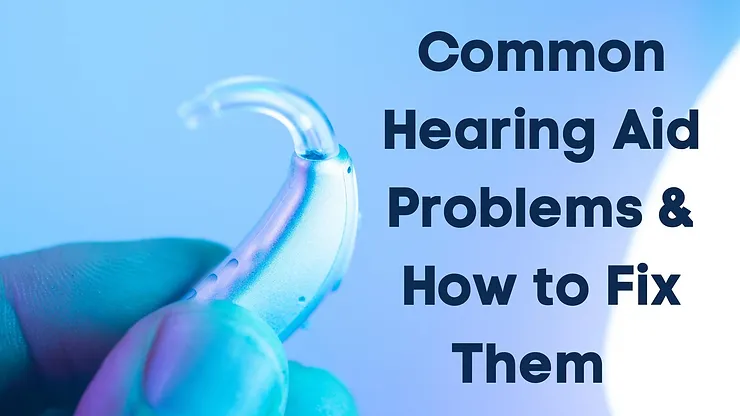
Regardless of how long you’ve waited before deciding to invest in hearing aids, they’ve probably quickly become a vital part of your daily life. When you run into problems, it can have a major impact on the ease and comfort of your listening life. Routine maintenance and small obstacles are part of life with hearing aids. Most people with hearing aids agree that the minor inconveniences of servicing these smart devices are outweighed daily by the improvement in their everyday conversations and communications.
There are common errors reported by hearing aid wearers everywhere:
“My hearing aids just aren’t working.” It might be that your hearing aids aren’t producing any sound or they may not appear to turn on.
“My hearing aids are too quiet.” Perhaps your hearing aids are producing sound, but it’s fainter than you would like.
“My hearing aids sound weird.” There are times your hearing aids are producing sound and it’s at the volume you prefer, but the sound is distorted or strange.
“My hearing aids are producing feedback.” Feedback from hearing aids may sound like whistling or external noise beyond what is happening in your sound environment.
These are all common experiences that do not mean you should give up on your hearing aids, instead try some of these simple tips for quick diagnostics. It is likely you can spot and handle the source of complaint. Remember that hearing aids take a period of adjustment and that includes encountering typical bumps and challenges that come from routine maintenance. If your car suddenly stopped, you wouldn’t get out and abandon it on the side of the road. You’d investigate the cause of the trouble and get back on your way. And as you become used to wearing hearing aids, these will become comfortable habits you can incorporate so that your easier communications aren’t interrupted.
For the times you need a quick fix beyond the old ‘turn it off and on again,’ here are a few simple fixes to try before seeking expert repair.
Turn it off and on again
You probably already tried this, but do it one more time. It’s an IT standby because it works a surprising amount of the time! Make sure that your hearing aids are turning on, even if they aren’t producing sound. If they won’t turn on at all, skip on to the battery section.
Take out your hearing aids and reinsert them
Even when we do a repetitive action like inserting hearing aids, there are times we misjudge. Patiently remove and re-insert your hearing aids. How do they feel now? You may need to be re-fit if it’s been a while since your initial fitting or if you’ve undergone changes. Physical changes like weight loss, or even simply the impact of time on your ear, may require new fittings so that your hearing aids are calibrated precisely with your body. This may be necessary if you continue to experience feedback or whistling.
Check for obstructions on the hearing aid itself
Find some good light and a quiet space and examine your hearing aids. Check to see if there is earwax buildup on your devices. Pay special attention to the microphone and sound outlet areas. Carefully clean away residue or buildup.
If you have behind-the-ear (BTE) hearing aids that contain both an earmold and tubing, you should also look for cracks or moisture in the tubing. Your audiologist’s office can assist you in replacing the tubes if you do see damage.
If the fit feels off or like there is an obstruction in your ear and there is nothing clogging up the hearing aid device, you may need to have a physical examination to check for and remove blockages like ear wax or other build up in your ear. This can be done easily and painlessly in our office.
Check the batteries
It’s a fact of life that most batteries don’t last forever. A simple fix to hearing aids that won’t power on is to replace the battery, particularly if they’ve been running a long time. You can also examine the battery itself and the places it makes contact with your hearing aids for corrosion. Though they can begin to feel like your hearing aids are a part of your body, they are fundamentally an electrical device. Your ears, however, are a challenging environment for electrical devices due to their very nature. Prolonged dampness can cause damage over time.
Return to your regularly scheduled program
If you have hearing aids that provide an array of programs, it may be that the sound or volume feels off because you’ve accidentally skipped to an unfamiliar sound program. Go back and check to see that you are working with your preferred program.
Consult your warranty
Be sure to check the warranty on your hearing aids. Depending on the model, we may offer free on-site simple repairs, replacements or trouble-shooting services because of an existing warranty.
Bring your devices in for service
Daily maintenance can help circumvent many common hearing aid failures, but sometimes you do need to take your hearing aids in for service. Contact us today to learn more!
